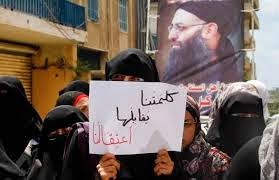The Lebanese Sunni Community: Bombed into Communal Consciousness
Much of the literature on Lebanon has focused on the Christian and Shiite communities. There is not much written on the Sunni community. Today much of the attention to the Sunni Lebanese community is within the context of the “threat” of the so-called Sunni Muslim fundamentalism. One of the few books to focus on the Sunni Lebanese, albeit the Beiruti Sunni Lebanese is Michael Johnson’s Class and Client in Beirut (1986). Johnson’s is a thorough study of the Beiruti Sunnis, their zaims and the clientelist system of a bygone era. Johnson had access to the Sunni zaims, in his book thanking the father of the current Prime Minister Tamam Salam, Saeb Salam.
An interesting observation/conclusion that Johnson makes as
to the Lebanese Sunnis is the following excerpt:
“The Sunnis, by
contrast, had not developed a communal consciousness comparable to that of the
other major confessions. They had always tended to look to Arab nationalism for
their political inspiration; and though this was still an essentially
confessional orientation, the Arab community with which they identified was
much larger, and therefore more nebulous, than the concentrated and parochial
communities of the Maronites and Druze. Even the Shi’ites, who were fragmented
spatially (the northern Bekaa, South Lebanon and Beirut) and also divided over
their degree of commitment to the Iranian revolution, were mainly influenced by
a parochial communalism which emphasized their grievances as a deprived and
disinherited, specifically Lebanese community. The attachment of the Sunni menu
peuple to the values of Arabism had meant that the divisions of the Arab world
had become replicated in the damaging intra-confessional conflicts between
their various militias, thus leaving them with a weak sense of communal solidarity
at a time when a confessional balance of military forces seemed to be the most
likely framework for an end to the civil war. Thus, in a political sense, the
Sunnis were the war’s main casualty among the larger Lebanese confessions, and
they had to accept a decline in power and status similar to the one they had
suffered with the imposition of Greater Lebanon in 1920. But their political
and socio-economic resources had been much stronger during the French Mandate
than they were in 1985. With the rise of the Shi’ites to a position of
prominence, it was likely that they rather than the Sunnis would be the major
partners of the Maronites in any new Lebanon which might conceivably emerge
from the long nightmare of civil war.”
Pg. 213-214
Communal Consciousness.
Imposed.
The Sunni community, given the upheaval that started with
the Hariri assassination, is a changed community. It is not a radicalized
community. But there is definitely a growing communal consciousness that is the
outcome of a series of setbacks and challenges that began with the assassination
of PM Hariri and did not end with the October 2014 clashes in Tripoli.




Comments